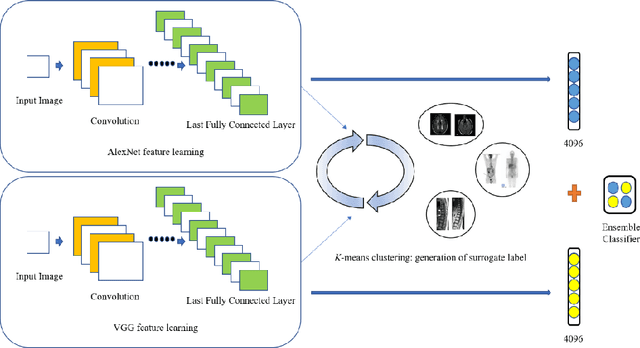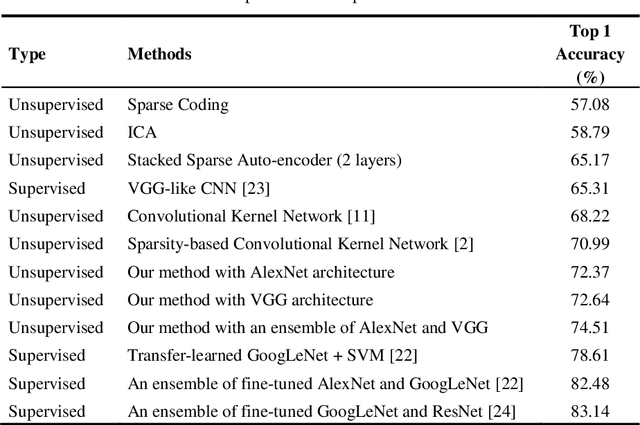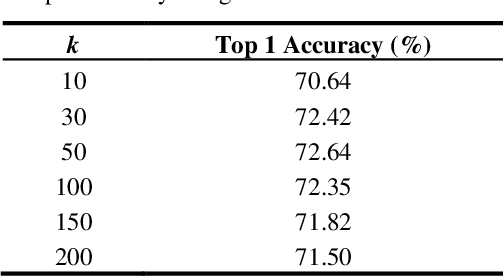Unsupervised Feature Learning with K-means and An Ensemble of Deep Convolutional Neural Networks for Medical Image Classification
Paper and Code
Jun 07, 2019


Medical image analysis using supervised deep learning methods remains problematic because of the reliance of deep learning methods on large amounts of labelled training data. Although medical imaging data repositories continue to expand there has not been a commensurate increase in the amount of annotated data. Hence, we propose a new unsupervised feature learning method that learns feature representations to then differentiate dissimilar medical images using an ensemble of different convolutional neural networks (CNNs) and K-means clustering. It jointly learns feature representations and clustering assignments in an end-to-end fashion. We tested our approach on a public medical dataset and show its accuracy was better than state-of-the-art unsupervised feature learning methods and comparable to state-of-the-art supervised CNNs. Our findings suggest that our method could be used to tackle the issue of the large volume of unlabelled data in medical imaging repositories.
 Add to Chrome
Add to Chrome Add to Firefox
Add to Firefox Add to Edge
Add to Edge